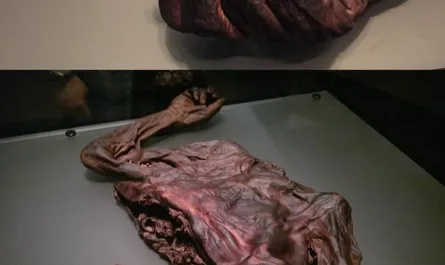St Andrews Castle in Scotland, perched dramatically on a cliff overlooking the North Sea, holds centuries of history within its weathered stone walls. While it is well known as the residence of bishops, a fortress, and a site of political intrigue, one of its more unusual features is its medieval toilet system—what’s often referred to as a “garderobe.” This 13th-century toilet at St Andrews Castle was ingeniously constructed to empty directly down the cliff and into the sea, serving as a unique solution to the waste disposal challenges of medieval times.
While it may not be the most glamorous aspect of the castle’s history, this garderobe offers fascinating insights into medieval sanitation practices, the daily life of those who lived in the castle, and the architectural ingenuity of the time.
A Brief History of St Andrews Castle
Before delving into the specifics of the toilet system, it’s important to understand the historical significance of St Andrews Castle. Located in the coastal town of St Andrews, Fife, the castle was originally built in the late 1100s and became the residence of the Bishops of St Andrews, the highest-ranking church officials in Scotland.
Over the centuries, the castle underwent multiple phases of construction, destruction, and restoration, playing key roles in both religious and political affairs. It witnessed the Scottish Wars of Independence, the Reformation, and other important events. The grandeur and strategic position of the castle made it a symbol of power. However, it was also a place where the practical necessities of everyday life had to be addressed—and that included waste disposal.
The Garderobe: Medieval Toilet Technology
In medieval times, castles and large buildings often featured garderobes, which served as rudimentary toilet systems. These were typically small chambers built into the thickness of the castle walls, providing a private space where occupants could relieve themselves. Unlike modern toilets with advanced plumbing, the garderobe relied on gravity and natural elements for waste removal. In the case of St Andrews Castle, the solution was to design the garderobe to empty directly down the cliffside and into the sea below.
This system was not unique to St Andrews, but the castle’s location made it an ideal candidate for such a design. Situated on a high, rocky promontory, the castle naturally lent itself to a waste disposal method that capitalized on the forces of gravity and the cleansing power of the sea tides. Waste would simply fall through a chute carved into the castle wall and be washed away by the ocean waves.
Sanitation and Health in the Middle Ages
While the concept of the garderobe may seem crude by today’s standards, it was considered quite advanced for the time. Medieval sanitation practices were notoriously poor, especially in densely populated areas. Cities and towns often struggled with waste management, and disease outbreaks like the plague were common due to unsanitary living conditions. Castles, however, had the advantage of being isolated fortresses, and the ability to dispose of waste directly into the sea represented a relatively hygienic solution compared to other methods available at the time.
By placing the garderobe high above the sea and relying on the tides to carry away the waste, the residents of St Andrews Castle were able to maintain a cleaner living environment than many others in medieval society. In an era where chamber pots and open pits were the norm, this system would have been seen as a practical and even luxurious feature.
The Architecture and Design of the Garderobe
The construction of a garderobe required careful architectural planning. The chamber itself was typically small and simple, often with a stone or wooden seat with a hole in the middle. The waste would then fall down a vertical shaft that extended from the seat to the exterior of the castle. At St Andrews Castle, this shaft was cleverly positioned to deposit the waste at the base of the cliff, where the sea would carry it away with the tides.
This design not only solved the issue of waste disposal but also minimized the unpleasant smells associated with waste. The constant flow of fresh air from the sea and the natural drainage system would have helped reduce odors inside the castle. Additionally, the stone construction of the garderobe was easy to clean and maintain, further contributing to the system’s longevity and efficiency.
The Role of Garderobes in Castle Life
For the residents of St Andrews Castle, the garderobe would have been an essential part of daily life. While the castle was primarily a place of political power and religious authority, it was also a home for the bishops, their servants, and visiting dignitaries. The garderobe’s design reflected the need to balance comfort and practicality, ensuring that the castle remained functional even as it served as a center of power.
The existence of a relatively advanced toilet system in the castle is a reminder that, despite the romanticized view of the Middle Ages, people of the time were highly concerned with personal hygiene and cleanliness—at least, to the extent that their technology and knowledge allowed. The garderobe at St Andrews Castle would have been a mark of status, as such features were typically reserved for the wealthier classes.
Conclusion
The 13th-century garderobe at St Andrews Castle offers a fascinating glimpse into the everyday lives of medieval inhabitants. Far from being just a simple toilet, this structure represents the ingenuity of medieval architects and the practical solutions they devised for living in a world without modern plumbing. The ability to harness the natural forces of the sea to manage waste is a testament to the resourcefulness of the castle’s builders.
Though often overlooked in discussions of medieval castles, the garderobe at St Andrews Castle is an important reminder that even the most powerful and wealthy individuals of the time had to contend with the same basic human needs as everyone else. Today, as visitors explore the ruins of the castle and gaze out at the North Sea, they can appreciate the ingenuity that went into making life a little more comfortable—and a lot more hygienic—in a time long past.





